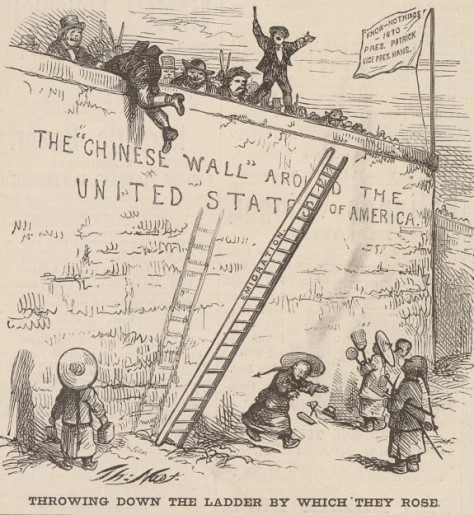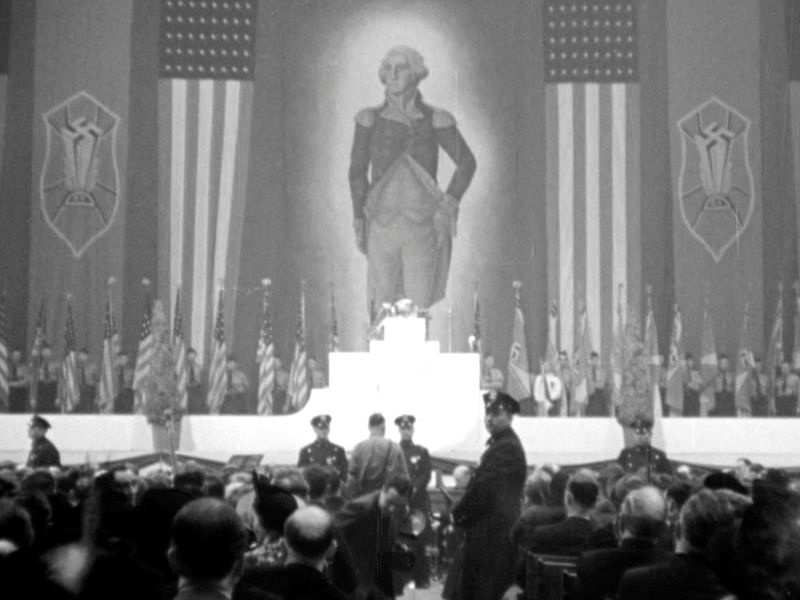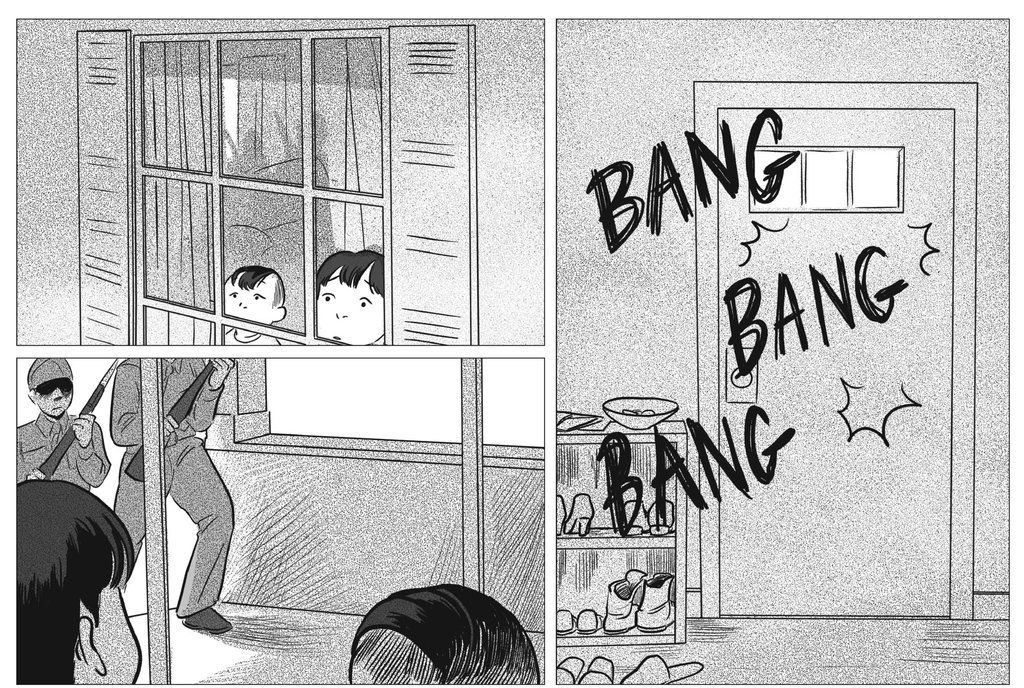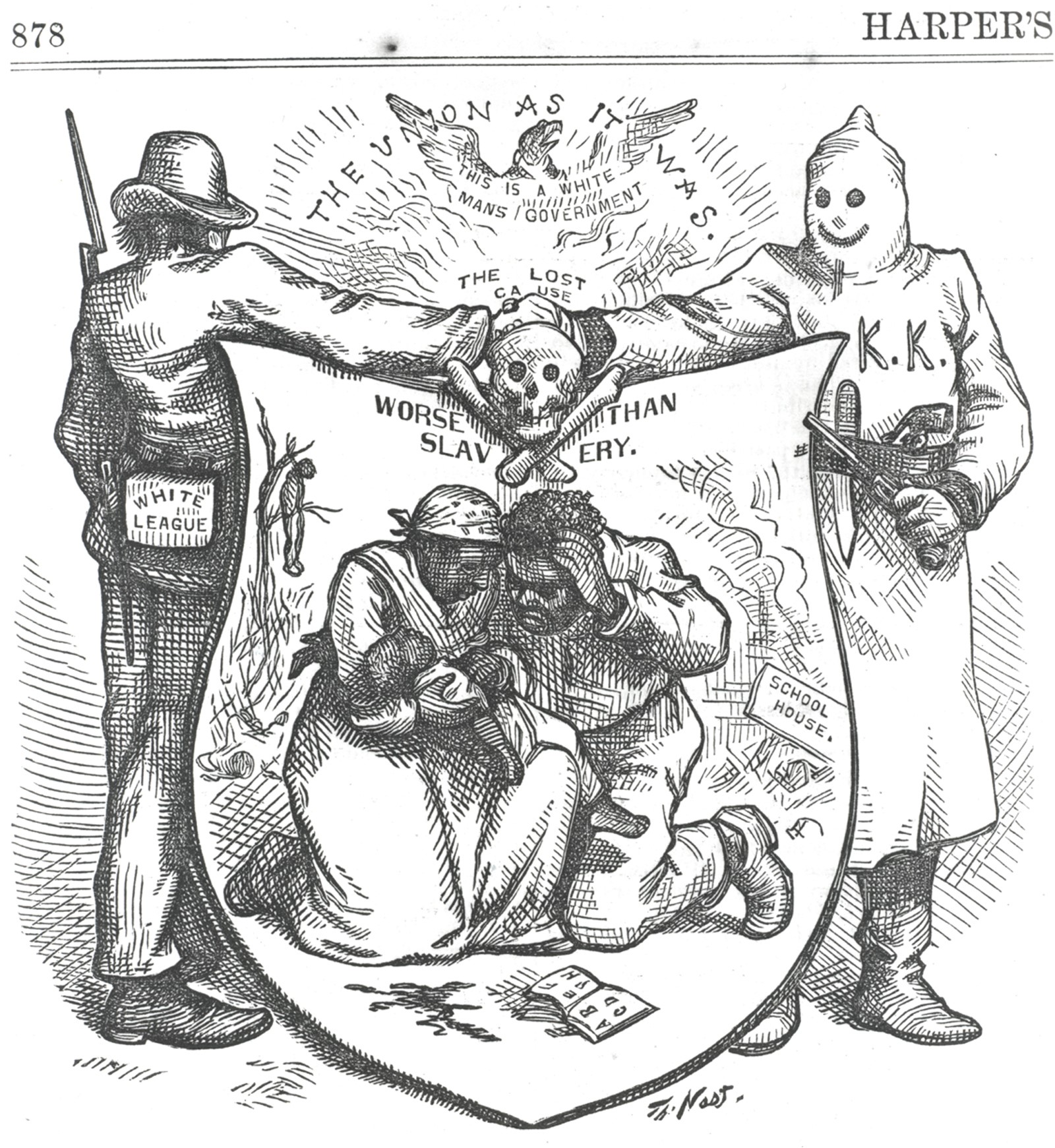An examination of American history’s most pressing questions….
When historians are developing inquiry, we will often ask, “What questions in this era were people trying to answer? and “What questions do we as historians have when we try to understand this era?” In this article, I strive to answer these questions in examining the timeline from post-Civil War Reconstruction through WWII. Additionally worth noting, this essay was also written bearing in mind that I’m a history teacher and developing inquiry is important both as a historian and as an instructor
What questions were the people in this era trying to answer?
After the Civil War, the country was embroiled in tensions, as they tried to truly unify the nation once more. Only days after Confederate surrender, Lincoln was assassinated by one of the most famous actors of the time, John Wilkes Booth. This left the office of the Presidency to be filled by Andrew Johnson, a Democrat with a very different vision of a unified United States. With that said, there were many questions swirling about in the Executive and Legislative branches, as well as in public life. For example, How will the nation survive?, was a valid concern. An estimate of 620,000 people had died, and the new government had met its greatest challenge. They were asking, What do we do with the South? The North certainly felt the effects of the war with the Depression of 1873, but the South was absolutely devastated, not to mention infrastructurally behind. To answer the question, How can we ease the South back into the Union?, the Federal government divided the South into five military districts; they also did this to enforce Black emancipation.
However, what the military districts failed to address is the question, How do you quash an ideology? Even after the passing of the 13th, 14th and 15th Amendments, things in the South didn’t seem to be working, nor did it seem that they were willing to change the foundation of racism that came with the practice of slavery. Between the economic depression and the country’s general sense of low moral, the North eventually let the South be, and pulled out of enforcing Reconstruction policies by 1877.
For Blacks in the South, they too, had many questions following their emancipation. What is freedom? Is it the deliverance from slavery? How can we enforce our equal rights as men? For them, freedom included civic equality, suffrage and the ownership of property. Reconstruction saw the largest surge of Black politicians in United States history. As many as fifteen hundred Black men occupied local, state and federal offices. However, whites responded to this by implementing voter suppression tactics, such as literacy tests, poll taxes and threats of violence at the polls, to ensure this would never happen again. In fact, to this day, we have not seen that many Black people hold office at any given election cycle.
How do we provide for ourselves and our families? Emancipated people were also promised “forty acres and a mule,” as reparations and facilitation in starting their own homesteads. However, that promise was not met. Instead, the system of sharecropping was put in place; a process that required Blacks to rent a small plot of land, tools and goods (usually from their former slave owners) for subsistence farming. Whites used the sharecropping system to recreate the conditions of slavery as much as possible. Violence increased substantially because Black lives were no longer a commodity. Blacks were forced to work the white plantation owner’s farm first, before they were allowed to farm their own land. Tools, goods and rent were marked up at an enormous rate and Blacks were not allowed to keep all the profits from their plots. This left emancipated people in massive amounts of debt, leaving them unable to economically grow.
The Federal government put the Freedmen’s Bureau in place to answer the question, Will there be support for newly emancipated people? The organization provided food, clothing and other provisions, helped with work contracts for illiterate Blacks, finding displaced families, established schools and temporary shelter. Unfortunately, the Bureau was not given the resources or the staff to deal with the overwhelming needs of millions of emancipated people. This left many Blacks signing work contracts that were exploitative, and other forms of massive pushback from Southern whites. They asked, How much should the state or Federal government provide to those in need? Does it promote idleness and slow down personal autonomy? How do we prevent Blacks from becoming our equals? White resistance to these measures (and emancipation more broadly) brought the formation of the KKK, Black codes and the landmark 1896 case, Plessy v. Ferguson, which enacted de jure segregation in the South.

As the nation entered the Gilded Age, coined by Mark Twain, inequality was rampant as the country was growing and shifting at a rapid rate, and Black people were not the only group to be marginalized. The question, How do we control the flow of Chinese immigrants coming into the U.S.?, brought the Chinese Exclusion Act in 1882, the first illegal immigrants in the nations history. The Lakota in South Dakota were asking, How can we stop the U.S. government from seizing our lands? What can we do to bring prosperity and abundance once more? Which resulted in the massacre at Wounded Knee, killing 300 Lakota men, women and children- the last Indigenous insurgence of the era. White women also continued their efforts towards suffrage and personal autonomy.

In his historical thesis, Frederick Jackson Turner announced the frontier was closed at the 1893 World’s Fair; The United States was at a turning point. He believed Westward expansion was at the center of American psyche and posed the question, What is the new American frontier? And the answer was in transportation, agriculture, communications, and technology.
The questions, How can we make money? Where do we call home? Where can we be safe from violence?, brought a mass influx of people into Northern cities. Immigrants, mostly from Southern and Eastern Europe, arrived to work in cities all across the nation. Between 1880 and 1920, over 20 million people immigrated to the United States. This was also a time of migration for LGBTQ individuals, as they flocked to cities and created artistic enclaves such as Greenwich Village in New York City. Additionally, Blacks in the South also migrated to Northern cities which would be known as the Great Migration. Whites from rural towns also migrated to cities, as farming technologies improved and needed less man-power, therefore less jobs available in rural areas.
The Gilded Age is named as such, because this was a time of massive income inequality. At the time there was little regulation on corporations and businesses, as they horizontally and vertically integrated with one another, creating monopolies. Those in power asked, Are wealthy people inherently superior?, as Social Darwinism emerged to answer that exact question. The working class pushed back as unions formed and strikes were held. Upton Sinclair’s The Jungle, revealed the horrors of the Chicago meatpacking industry, as people demanded the government answer the question, How can we be safe from the harms of unfettered capitalism? They wanted the government to reign in big business, address food and drug safety, child labor and workers’ rights and protections.
While income inequality continued to persist, there was an emergence of a new urban middle class. And because of the successes of collective bargaining by unions, less work hours meant more leisure time. So people asked, How do we entertain ourselves? The result was a consumer culture, one that defines American society today. Mass entertainment became a major commodity as the technological advancement made moving pictures possible. The first major feature film that put Hollywood on the map was Birth of a Nation in 1916, a racist film glorifying the KKK and villainized Black men. Entertainment also came in the form of baseball games, college football, minstrel shows, the circus and vaudeville.
The early 20th century left people searching for order within this culture of consumption. They asked, How can we adapt to the changes of the nation in a more orderly way and improve upon it? This launched the nation into the Progressive Era. The Temperance movement promoted moderation or abstinence from alcohol consumption. The question, Who gets to be an American?, arose once again as the Immigration Act of 1917 was signed into law. It was the most sweeping immigration reforms to date, which required literacy tests, head taxes, and excluded specific groups such as people with disabilities, sex workers and LGBTQ immigrants. White women’s suffrage movement was also a monumental victory at this time as women asked, What kind of democracy does this nation have, when only 50% of the population are allowed to vote?
At the same time, Jim Crow laws were dominating the South. According to the NAACP, “from 1882-1968, 4,743 lynchings occurred in the United States. Of these people that were lynched 3,446 were black. The blacks lynched accounted for 72.7% of the people lynched.” Additionally, Social Darwinism had evolved into scientific racism known as eugenics. White scientists asked, Are people of other races inherently genetically different? This resulted in public health policies like the El Paso 1917 quarantine, which required Mexican migrants to strip in front of U.S. border officials and take forced kerosene baths.
All these domestic issues of the Progressive Era occurred simultaneously with the U.S. entering WWI. The border with Mexico officially closed after the interception of the Zimmerman Telegram as people asked, What should the role of the United States be in the world? Why did the U.S. expand overseas and join the war? The U.S. helped to break the stalemate on the global stage. However, once the war ended, there was a massive push for American isolationism and laissez-faire business policy, a development that would last the duration of the 1920s. People asked, Can freedom be bought? The crash of 1929 answered that question with a giant “NO.”
After the economic crash of 1929, the nation fell into the Great Depression which lasted until 1939. People asked, How are we going to sustain our lives? Where can I work? Capitalism always has booms and busts, but why is this so bad and lasting so long? The nation was at 25% unemployed as people turned to the government for solutions. As a result, President Franklin D. Roosevelt enacted a series of public works projects, regulations and reforms known as the New Deal.
The New Deal raised the time-old American question, What is the role of government? Roosevelt’s plan dramatically expanded the role of the Federal government to employ and protect the economic stability of the nation. Those who opposed the New Deal, argued it damaged the freedom of enterprise. They asked, Is the New Deal creating a society of dependency on government handouts? And while the policies did dramatically assist people of color and single mothers, the New Deal was not correlated with antiracism. According to Foner, “Nowhere were the limits of the New Deal freedom more evident than in the evolution of federal housing policy, which powerfully reinforced residential segregation.”
While the New Deal certainly facilitated in creating a foundation of economic stability, the nation did not see wide-scale prosperity until World War II. Not only did wartime mobilization continue to expand the scope and size of the government, it also secured the United States as a world power on the global stage. Prior to Pearl Harbor, people asked, Does the U.S. really need to be involved in the War? The America First Committee was formed in 1940 at Yale University but was quickly dissolved after Pearl Harbor in 1941. Americans finally turned their attention to the horrors of the Nazi invasions and it galvanized patriotic assimilation. People asked, How can I contribute to the war front? Men both selectively joined and were drafted into the military. At home, women worked in factories and the Braceros program brought large-scale Mexican contractual laborers to farms.

Despite their revulsion of Nazi racism, there was wide-spread animosity for Asian Americans, especially Japanese people. Whites asked, How can we ensure we are safe from the Japanese threat at home? Their solution was to establish Japanese concentration camps. Americans have labelled them internment camps but according to George Takei, a famous actor and survivor of Japanese incarceration, “The camps that we were in were concentration camps. If you look the word up in the dictionary, the dictionary definition is the concentration of people of a common heritage, race, or faith for political purposes…The Jewish people concentrated by the Nazis were in death camps or extermination camps. So we need to recognize each for what it is, and each are grotesque horrors inflicted on other human beings.”Japanese Americans were most likely questioning, Why are we being persecuted? How can we show our loyalty to the United States and combat discrimination? Why are we being taken from our homes and being imprisoned?

What questions do we as historians have when we try to understand this era?
As a historian, I am particularly interested in the era of Reconstruction. Some pressing questions are, Was Reconstruction a lost cause? Did the South actually lose the Civil War? Some historians have asked, If Lincoln hadn’t been assassinated, would Reconstruction been successful? However, I find historical hypotheticals to be fruitless. It’s more important to measure the metrics of what did happen than imagine what could have happened. Instead, a better way to frame this question would be Did the assassination of Lincoln cause Reconstruction to fail? Analysis of the Five Military Districts raises the question, Can the government change ideology through military force? Another important question, Is sharecropping slavery by another name?
Historian Rayford Logan defined the post-Reconstruction era between 1887-1920s as the “nadir of American race relations.” Nadir meaning the lowest point, he argues it was the most violent and unsafe time for a Black person in America. For us, an important question is What defines the post-Reconstruction era as the nadir? Racial inequities and violence in the South explain the Great Migration but other questions to ask are, How did industrial advancements affect migration patterns and the job market? Why was industry booming in the North? Why were so many Southern and Eastern Europeans migrating to the U.S.? When inquiring on the Gilded Age, historians ask, Was big business out of control? What are the issues with laissez-faire economics? How much government regulation is needed to protect the people from corporate exploitation? How did unionization gain political traction? How did Russian politics affect American perceptions of communism?
When examining the Progressive era, it’s important to understand the way social movements were interconnected with one another and influenced by war. For many historians, WWI is the marker of the modern era and has fundamentally shaped the ways we are configured today. For my undergraduate thesis I inquired as to How Southern border policies of the Progressive era evolve into the militarization of the border, today? Some additional questions of the era include, How did WWI shape the culture of the 20th century? How did Prohibition change culture and society? Did the Temperance movement influence the War on Drugs? How was the women’s suffrage movement connected to other events of the time? Can we thread a connection between early 20th century social movements to modern-day praxis? Was the U.S. engaging in a new form of imperialism?
The Great Depression and analysis of the New Deal also raises a lot of questions for historians in understanding the modern world. Why did the Depression last so long and hurt so badly? Does the government have a responsibility to provide jobs and protect those in need? What are the social conditions for freedom? Was the New Deal a good deal? Why was universal health care dropped from the New Deal? Additionally, analyzing the Dust Bowl is a great way for students of history to understand the connections between climate and social issues. How did the Dust Bowl impact the Great Depression? What happens to people whose homes are devastated from climate events? How did the Dust Bowl affect arts and culture? And lastly, this era also brings us back to the same question we ask of every era, What is the role of the government?
One of the most pressing questions when inquiring about the impact of WWII on the U.S., is How did WWII establish the United States as a world power? Not only does it reveal to students that the U.S. wasn’t always a world power, but it also allows them to make the connections between the United States influence on the world, and it’s military industrial complex. Some other questions of the era include, How did the WWII shift social dynamics? How did WWII facilitate LGBTQ culture to flourish? How did women contribute to the war? What were American perceptions of fascism? What were the American perceptions of Japanese Americans after Pearl Harbor? Was the U.S. righteous in dropping atomic bombs on Hiroshima and Nagasaki? Are the people of this era the “Greatest Generation?”
